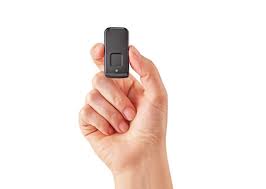My father’s in his mid 70s and his hearing isn’t very good in the frequency range that would be useful for finding his vacuum leaks.
I was thinking about setting him up with a directional microphone and a pitch-shifter app to bring environmental sounds down a couple octaves so he can hear them. There are tons of Android/iPhone apps that will pitch-shift in post, but none of the trial/freemium ones seem to work on a realtime monitor stream, especially on an external USB (UAC) microphone. I don’t want to start buying dozens of apps just to try them.
Any app suggestions or other ideas for him?
Frequency display app?
Great idea. Will try that on the next flow day.
If I recall, doesn’t a leak need to be pretty substantial to detect in the audible frequency range?
I’ve trialed and pushed usage of ultrasonic tools for this when I worked in maintenance engineering, some of my colleagues used then quite extensively and were able to justify the costs after the found a single tool air leak. Were also pretty interesting for bearing inspection, could pick up on damage far earlier than it’d be detectable with vibe or acoustic tools (certainly far earlier than thermal), they enabled some interesting lubrication practices too, aiming to prevent over-lubrication.
I found this USB ultrasound microphone that’s supposed to be compatible with any recording application. My experience, just a UT microphone was more than enough to pick up leaks, it’s very directional and presumably you’re going to be fairly close to the source, it is expensive at €250, might be something to keep in mind.
I like the idea that was brought up to maybe try a frequency analyser first? Spectroid on android or Sound Spectrum Analysis were recommend by Voron Deaign for 3D printer tuning purposes (belt tension, though I use a printed tensiometer for that these days). Only thing I can think of is yeah, will a vacuum leak be detectable in the audible frequency ranges? Probably worth a try regardless.
Thanks! Found a couple of much cheaper ultrasonic detectors that claim to do this, so we’ll try those (and the spectrum analyzer) first. The usb mic looks great if those don’t pan out!
I’d be totally interested to see how those work, what sensors did you grab?
We bought this AllSun adapter . It was able to confirm some smaller dropline leaks, but it missed more than it found. It was completely useless at finding the larger leaks (mostly in saddles and 3/4" tees) that seem to be the bulk of our problem.
So I’m pushing him to try the hearing aid apps – this one is expensive, but seems to have a good combination of EQ and pitch shifting that may make it possible for him.
I’m assuming he’s already got and wearing hearing aids? If so, you might be able to leverage much of what you’re looking built into what he has.
Hearing aids are configured specifically for that user to do the pitch shifting. Your father’s audiologist knows which frequencies your father is able to hear, and has programmed the hearing aid to move audible sound into those specific ranges. So that part is done. However, that likely doesn’t help on its own because hearing aid microphones are located and tuned for human speech etc to assist people in maintaining communication. There’s also limitation on the hardware because they have to be TINY to fit in/around ears and run on low power.
Enter the Buddy Mic! (aka companion mic, aka handy mic)

This is an external microphone with its own power supply and sound processor that attaches wirelessly (bluetooth LE usually) to the exact brand of hearing aid your father is using. Its a tightly integrated solution, so its pretty reliable and easy to use. I got one of these for my mother who had a similar need for augmented hearing at a distance, it works great!
Further, the one for my mother’s hearing aid brand has a 3.5mm jack on it that allows for a wired mic to be plugged into the buddy mic if you need more advanced audio solutions or frequency response handling.
For your father’s use case, he could enable his buddy mic, which would connect wirelessly to his hearing aids, then he could hold the buddy mic in his hands centimeters away from whatever he’s trying to detect sound off of.

